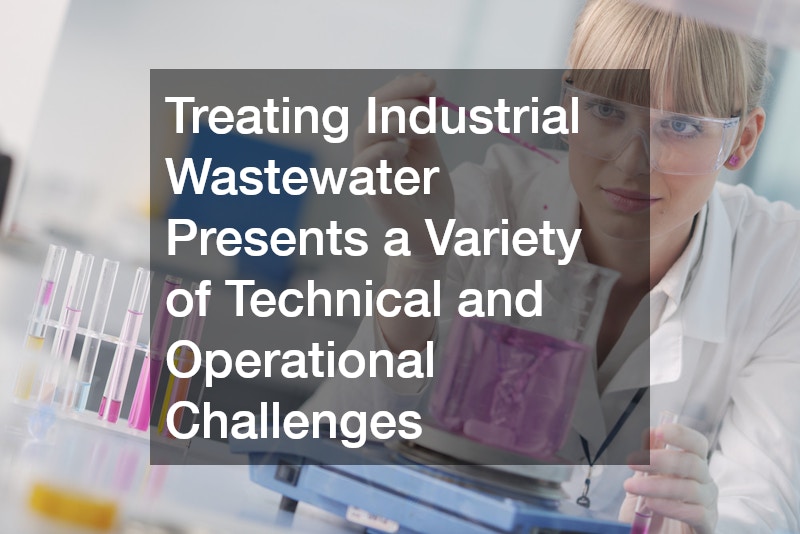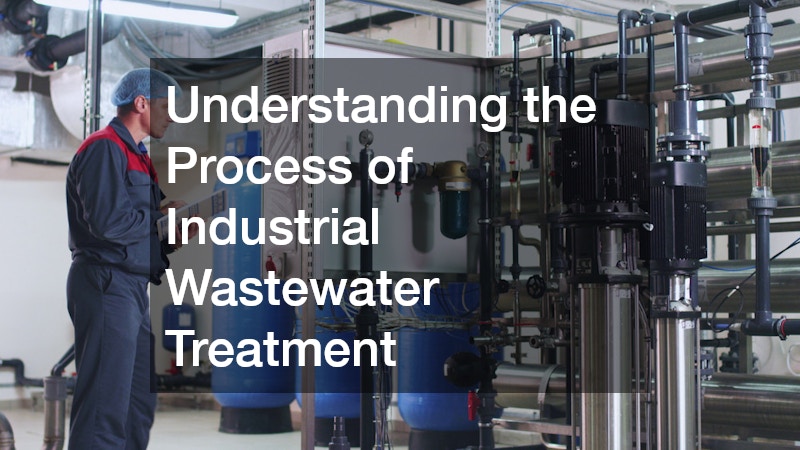In today’s industrialized world, the treatment of wastewater has become a crucial concern. The complexity and variety of pollutants require comprehensive solutions. In this article, we explore the key aspects of industrial wastewater treatment, uncovering the most frequently asked questions about this critical process.
How Does Industrial Wastewater Treatment Work?
Industrial wastewater treatment is an intricate process designed to manage and reduce the pollutants that flow from industrial activities. The essential purpose is to make wastewater safe for discharge into natural water bodies or for reuse.
This process typically involves a combination of physical, chemical, and biological methods to remove contaminants. Physical treatment methods might include sedimentation and flotation, which help in removing large solids. Chemical treatments may use substances like coagulants to facilitate the removal of smaller particles.
Biological treatment is another crucial component, often involving bacteria that digest organic pollutants. For example, activated sludge systems use microorganisms to breakdown waste. This step is essential because the organic pollutants can be particularly challenging to remove using only physical or chemical methods. The treated water is sometimes subjected to additional filtration and disinfection processes to ensure the removal of pathogens. Advanced treatment techniques such as membrane filtration may also be used to address specific contaminants.
Finally, industrial wastewater solutions treatment often ends with a stage of sludge management where the by-products of the treatment process are safely disposed of or repurposed. Sludge can be treated to reduce its volume and harmful characteristics through processes such as digestion and dewatering. The ultimate goal of wastewater treatment is to minimize environmental impact while ensuring industrial operations comply with regulatory standards. Innovations continually improve the efficiency of these processes, sometimes incorporating cutting-edge technologies like bio-electrochemical systems. The evolution of wastewater treatment technologies reflects the growing need for sustainability in industrial operations.
What Are the Regulations Surrounding Industrial Wastewater?
Governments worldwide have implemented strict regulations to control the discharge of industrial wastewater. These regulations are essential in ensuring that industries do not pollute the environment with harmful substances. The regulatory frameworks often dictate the permissible levels of various pollutants that can be present in wastewater. In the United States, for instance, the Environmental Protection Agency (EPA) oversees such regulations under laws like the Clean Water Act. Industries are required to obtain permits that stipulate the types of treatment required before wastewater can be discharged.
Adherence to these regulations is crucial, as non-compliance can lead to significant fines and penalties. Industries are often required to monitor and report their wastewater quality regularly, providing transparency and accountability. This regulatory oversight encourages industries to invest in better treatment technologies to meet required standards. Organizations often collaborate with environmental agencies and independent bodies to ensure compliance. Regulations not only protect the environment but also ensure public health by preventing the contamination of water supplies.
An interesting aspect of wastewater regulation is the increasing emphasis on sustainability and resource recovery. Modern regulations encourage not just the removal of contaminants but also the recovery of valuable resources from wastewater. Some industries have embraced this by developing processes that extract biogas or recover nutrients like phosphorus. These conservation efforts are guided by evolving regulations that promote a circular economy. Through effective regulatory frameworks, industries are motivated to innovate and improve their wastewater management practices.
What Are the Challenges in Treating Industrial Wastewater?
Treating industrial wastewater presents a variety of technical and operational challenges. One of the primary challenges is the diversity of pollutants present in the wastewater. Different industries produce uniquely composed effluents that require tailored treatment methods. For instance, the textile industry generates wastewater rich in dyes and chemicals, while food processing facilities produce organic-laden waste. Designing systems that effectively address these varying contaminants is a complex task often requiring customized solutions.
Another significant challenge is the high cost associated with wastewater treatment technologies. Installing and maintaining advanced treatment systems often requires substantial financial investment. While these systems are essential for compliance and environmental protection, the costs can be prohibitive for smaller companies or developing regions. Finding cost-effective methods without compromising treatment efficacy is a persistent challenge in the industry. Public-private partnerships and government subsidies are sometimes leveraged to overcome these financial hurdles.

In addition to financial concerns, there are also technological and logistical challenges. Some pollutants, such as heavy metals and persistent organic chemicals, are notoriously difficult to remove with traditional methods. This necessitates continuous research and development of new treatment technologies. Moreover, managing the by-products of wastewater treatment, like sludge, poses additional logistical challenges. Ensuring effective disposal or beneficial reuse of residuals is an integral part of comprehensive wastewater treatment strategies.
The treatment of industrial wastewater is a nuanced and vital endeavor, combining traditional methods with innovative technologies and strict adherence to regulations. Understanding these processes not only aids in compliance but also leads to environmental and economic benefits. As advancements continue, the future of wastewater treatment offers promising opportunities for more effective and sustainable solutions. By addressing the challenges and capitalizing on emerging technologies, industries can play a significant role in conserving water resources. Ultimately, the concerted efforts of industries, regulators, and communities can lead to a cleaner and more sustainable environment.
